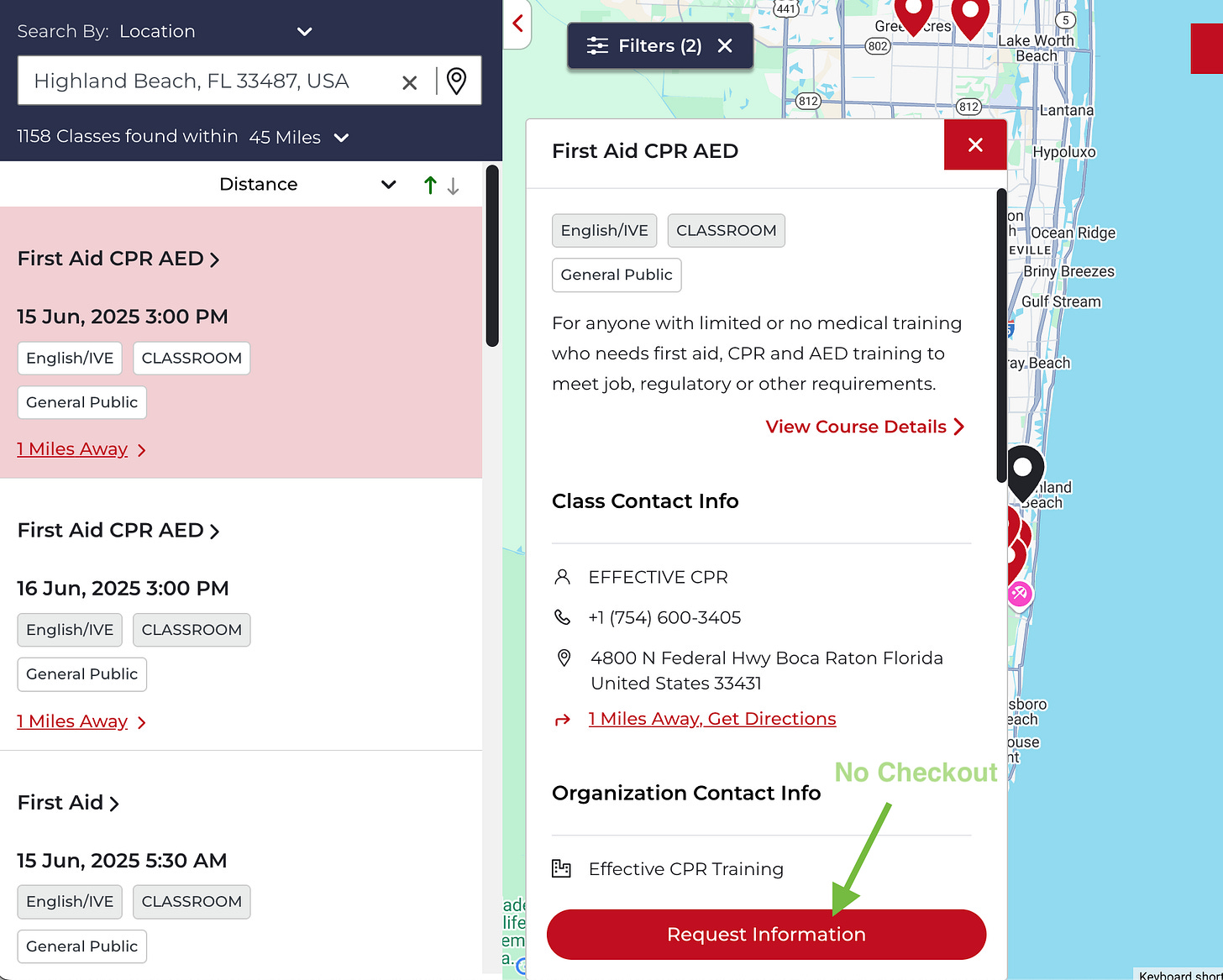Directories Are Not Discovery
How static listings hide CPR classes, drive trust down, and cap growth — SitRep #003
Before Amazon or Shopify, brands used store locators.
You searched, got a phone number, drove to a shop, hoped the item was in stock. High friction kept e-commerce niche.
Every market that killed that friction exploded:
SABRE digitised plane seats → air travel → 3 billion passengers / yr.
OpenTable put live tables online → 1 billion diners / yr.
Airbnb surfaced spare bedrooms → bookings multiplied 10×.
Rule: surface real inventory, kill the hassle, the market grows.
CPR training hasn’t crossed that line—because our “inventory” still hides in static directories.
Related: The System is Designed to Fail
Directories cap the market
Atlas, CPRNearMe, copy-cat lists = store locators.
They show providers, not classes. Data is self-reported and quickly stale, so most instructors don’t bother posting every course.
Students click and meet:
No date or seat count
“Request information” button
New website, new UX, no checkout
Students can’t book—only “Request Information.” Extra step = extra drop-offs.
A directory without live class listings is a museum of maybe-classes.
That’s why… 90 % of directory clicks never reach a live checkout.
Providers lose time reposting data and still stay invisible. And students abandon the search unless their job depends on certification.
To grow a healthy market you need real demand. Not artificial (required) demand.
Friction, not motivation, is the ceiling
American Red Cross found 40 % of Americans want to be better certified.
Yet… Only 10 % are certified. That’s a 4× gap of motivated people blocked by hassle—not apathy.
People pay the highest prices for the most convenient things; when checkout is painful, pricing power collapses. That hurts everyone.
The ceiling isn’t demand. It’s discoverability.
Google is already moving on
Search now favors pages that prove:
✔ Class exists
✔ Seats are open
✔ Price is accurate
✔ Booking is one click
Directories can’t prove any of that, so they slide down the rankings. The AHA recently purged 50,000 fake or outdated posts—perfect proof of how fast static data rots and erodes trust.
Modern platforms, like Hovn, are designed to surface this information, so providers see an immediate boost in free traffic.
From directory to discovery
Discovery means the listing pulls live data straight from the system that runs the class. Three pieces matter:
Schema-marked details — course name, date, price
→ Google understands it’s a real class and can rank it higher.
Real-time seat count
→ Students see availability now, not last week’s leftovers.
One-page checkout & instant receipt
→ Friction disappears, conversion climbs, no extra data entry for you.
Surface the inventory, kill the hassle, and CPR can grow 4× without creating a single ounce of extra motivation.
Next week: win local first
Even with real-time data, discovery fails if every provider targets the city center. SitRep 004 shows why hyper-local inventory wins—and how to claim it.
💬 Ready to see a modern platform in action?
Have questions first?Ask in the community chat. Founders and other providers answer. It’s open. → Join the Chat




